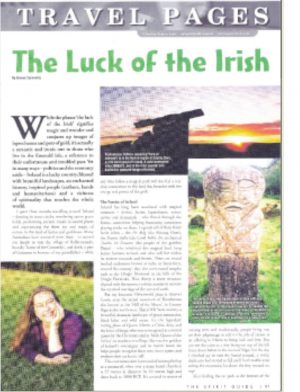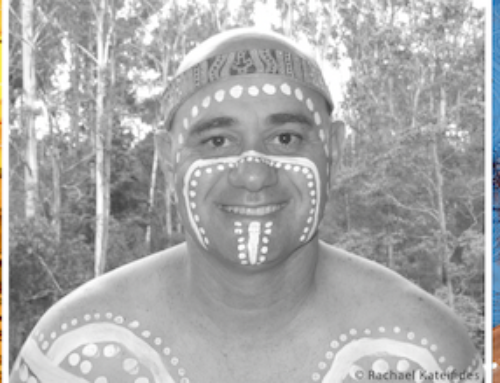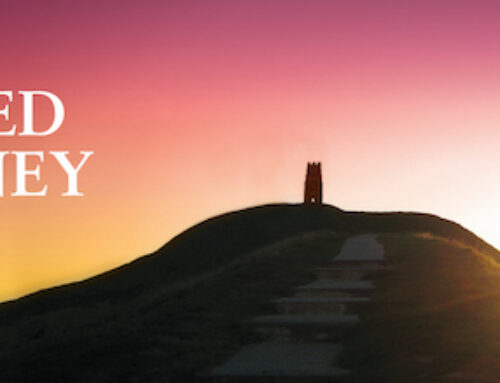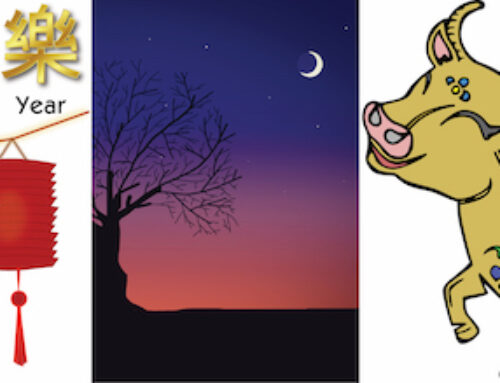 The Magic of Ireland
The Magic of Ireland
Spheres – national spiritual magazine
While the phrase the luck of the Irish signifies magic and wonder to the rest of the world, and conjures images of leprechauns and pots of gold, it’s actually a sarcastic and ironic one to those who live in the Emerald Isle, a reference to their unfortunate and troubled past. Yet in many ways – politics and the economy aside – Ireland is a lucky country, blessed with beautiful landscapes, an enchanted history, inspired people (authors, bands, humanitarians), and a richness of spirituality that touches the whole world.
I spent three months travelling around Ireland on my own, dancing in stone circles, wandering across green fields, performing ancient rituals in sacred places, and experiencing the sheer joy and magic of nature in this land of faeries and goddesses. Many Australians have ancestral roots there – it moved me deeply to visit the village of Ballyconneely, literally “home of the Conneelys”, and drink a pint of Guinness in honour of my grandfather – while any who follow a pagan or magical path will also feel a very deep connection to this land that breathes with the energy and power of the gods.
The Faeries of Ireland
Ireland has long been associated with magical creatures – deities, faeries, leprechauns, nature sprites and elementals who flitted through the forests, sometimes helping humanity, sometimes playing tricks on them. Legends tell of fiery, fiesty faery tribes – the Fir Bolg (the Shining Ones), the Daoine Sidhe (the Good Folk), the enchanted Tuatha de Danann (the people of the Goddess Danu) – who inhabited this magical land long before humans arrived, and who still live within its ancient mounds and forests. There are round banked enclosures known as raths, or faery forts, around the country, and they also constructed temples such as the Dingle Diamond in the hills of the Dingle Peninsula, West Kerry, a stone structure aligned with the summer solstice sunrise to recreate the mystical marriage of sun and earth.
But my favourite Otherworld place is Maeve’s Tomb, also known as the Hill of the Moon, atop the sacred mountain of Knocknarea in County Sligo, in the north west. This is WB Yeats country, a beautiful, dramatic landscape of green mountains and black lakes and wild ocean. It’s the legendary resting place of Queen Maeve, a Celtic deity and the lover of kings, who was reimagined as a mortal queen by the Christians and as Mab, queen of the faeries, in modern retellings. She was the goddess of Ireland’s sovereignty and its mystic heart, and helps people recognise their own inner queen and awaken their authentic self.
This enormous cairn – a mound of stones piled up as a memorial, often over a stone burial chamber – is 55 metres in diameter by 10 metres high, and dates back to 3000BCE. It’s covered in stones of varying sizes, and traditionally people bring one on their pilgrimage up the hill and add it to the pile, as an offering to Maeve and to bring luck and love. You can see the cairn – as a tiny bump on top of the hill – from down below in the town of Sligo, but the day I climbed up to visit the burial mound, a misty, thick rain had started to fall, and I was having trouble even seeing the mountain, let alone the tiny mound on top!
I finally found the carpark at the bottom of the hill and leaped out, trying to get my bearings. I found the little hedgerow-lined rocky laneway and started to climb upwards, in the pale light of a completely grey sky. The atmosphere was thick and wet, and the fog was swirling around me, but I paid it no heed (perhaps a little foolishly – people do get lost on these misty mountains, and these are obviously the conditions they say not to climb in, with heavy mists that obscure vision, but I trusted I would be safe). The path, lined with rocks and blackthorn hedges, got steeper and narrower, and a tiny stream rushed down over the crevices, making me gasp as the cold water seeped in to my heavy boots. The laneway finally ended and I passed through an old-fashioned turnstile and started climbing straight up through the paddock. And then a moment of fear touched me – I had absolutely no idea where I was going or how far it was, because suddenly the mists descended like a cloak, or I walked into them, and I could see only a few feet in front of me. It’s the strangest sensation, walking into this swirling thickness. It didn’t feel like it was raining, and I didn’t feel wet, but my jumper was really damp, and the air was wet and thick. So mysterious and mystical and Otherworldly. I could imagine the mists clearing and finding myself in the land of the faeries – it’s like a space between the worlds has opened up and I’m moving through this other dimension.
I couldn’t see up or down, or even see my hand if I held it out in front of me, so I climbed tentatively, unsure of how much further I had to go (and hoping I wouldn’t unknowingly reach the top and fall off the mountain) because I couldn’t see anything.
Finally a shape loomed out of the mist and I stumbled upon the cairn – 40,000 tonnes of rocks right in front of me. I climbed it clumsily, staggering a little, until I reached the grassy bit on the top, which had a tiny stone pile on it, like a model cairn, where I put my pebble and said a prayer for peace in this land.
For a moment I wished it was clear, so I could have seen the amazing views I know are there – out west over the ocean, north into Leitrim, south to the mountains – but it was perfect just the way it was. The swirling mists had their own special charm, and all I could see was whiteness, like I’d walked into a cloud. It was so beautifully ethereal. I breathed in the clean, wet, thick air, and felt proud that I’d made it up to the top – but also a bit nervous about getting down again!
At the bottom of the hill is Carrowmore megalithic cemetery, circa 4000BCE, which is also a place of magic. Wild yet easily accessible, it’s a field of stone circles, ancient burial mounds, passage tombs, dolmens and primrose yellow buttercups, which is open to the public and maintained by the country’s heritage board. I wandered barefoot through the grass, marvelling at the stones, listening to the sound of the bees and the flight of the birds. There’s a big cairn which was being excavated, so I could see inside it, which was very cool. Unearthing ancient secrets, unleashing a new truth and wisdom for those who are willing to listen. The entire Carrowmore complex is laid out in a spiral pattern, with most of the sites pointing to a giant dolmen – some think it’s a portal – in the centre. Signs of ancient bonefires, where they cremated the dead, have been found by archaeologists, which evokes wonderful images of primeval religious ceremonies and earth rituals.
In the surrounding landscape there are more stone circles and dolmens, in people’s backyards and paddocks! Can you imagine what it would be like to live with such a powerful and spiritual monument in your garden, outside your kitchen window? A connection to ancient wisdom and traditions, a constant reminder of what has been before…
Stone Circles
There are hundreds of stone circles and other ancient monuments scattered around Ireland, but one of my favourites is Lios na Grainsi, the “Stones of the Sun”, near Loch Gur in County Limerick, also known as Grange Stone Circle. It’s the largest in the country, and not far from Limerick, a major city, yet it is still so quiet and peaceful, and located so casually, on the side of the road, without a big sign or any fuss. There’s a tiny spot where three cars could pull in, and a little box near the gate asking for contributions for the farmer who maintains the circle and keeps the fences in good repair. I love that people are so respectful of their history and heritage here, that they are happy to share access to the ancient monuments on their land, and keep them intact and cared for, after the sad medieval practice of tearing them down to build houses and churches.
Grange is amazing – it’s made up of 113 contiguous stones, all touching, and the biggest one is more than four metres high and weighs 40 tonnes! Twelve of these massive stones are distributed at key points around the circle, with two of them flanking the imposing entranceway on the northeast side. Here you walk down a narrow stone-lined passage to a break in the surrounding embankment, where the two guardians stand, and you’re overcome with a sense of the majesty of the monument as you walk respectfully through and into the circle. The ring of stones is set low within a large embankment, making it even more impressive, so you climb up a slope to get to the circle, and then move downwards into its centre, which is all level, and filled with rich and fragrant grass. One pair of stones and the entranceway were aligned with sunset on the cross-quarter day of Samhain, which falls in early November in Ireland, and another stone is aligned with the summer solstice sunrise, all indicating its importance as a ritual site for people in the Neolithic period. The site is also known as the Lios, or “Fort of the Faeries”, and is believed to have been a gateway to the Otherworld. In Ireland ancient monuments are often associated with the fae, and many are said to be portals to the their realm, where they withdrew when they could no longer deal with humans.
The first time I visited Grange, in a misty sprinkle of soothing rain, the tiny grassy area between the road and the circle was swarming with a herd of sweet little black and white calves, all standing between me and it. I was a bit nervous about walking through them, but they didn’t seem to mind me (although one didn’t want me to leave when I was going, and kept standing between me and the gate so I couldn’t!). And there was one right next to the stone circle, who just stood there eating, chewing his grass and regarding me with a slightly puzzled expression. He stayed there the whole time I was there, and didn’t even run away when I took a photo of him and the flash went off. There’s an Irish goddess of cows, Bo – Boanna – so maybe they feel her presence and felt comfortable.
I spent hours there in the misty almost-rain, walking slowly past each of the stones, laying my hands on each one, feeling the wet earth and its vibrant energy with my bare feet, and marvelling at the eastern entrance – where the sunlight streams through on the morning of the summer solstice to illuminate the centre of the circle. The next day, a sunny, hot, blue sky day, I returned to see it in the sparkling sunshine, and it was so beautiful all lit up with rays of light and dancing sunbeams. There were no creatures on this day, so I sat down and meditated in the middle of the circle, closing my eyes and revelling in the feel of the warmth on my arms and the solar energy I was breathing in along with the fresh air and the heady scent of grass and nature. I don’t know how long I sat there, daydreaming, connecting to nature, but suddenly I felt a strange sensation on my arm. I snapped my eyes open and looked up, and it was one of the calves, licking me and staring at me with those huge gentle eyes.
Another beautiful ancient stone structure is Poulnabrone Dolmen in the Burren region of County Clare. It’s the most famous postcard image of Ireland, and is truly breathtaking as the sun sets behind it, sinking into the western ocean and colouring the sky a hundred shades of pink, gold, purple, madder rose, blue and orange. It’s so dramatic against the golden pinky clouds, with the rays sparkling and dancing through the cracks of the rock. When the dolmen was excavated in 1989 the remains of 25 people were found beneath it, along with pottery and jewellery, and they discovered they had been buried in 3800BCE. The dolmen was originally covered with a mound of earth, and green grass, but this has worn away, leaving just the stone chamber, which looks like a strange lumbering prehistoric beast. Poll na bro means hole of the grinding stone, so maybe the wise women of long ago used to grind their herbs and whip up their potions here…
Witches
Throughout time Ireland has been home to magical practitioners, wise women and witches, people who worshipped the gods and goddesses, communed with the unseen world and honoured the turning of the seasons. Clonegal Castle, in the southeast of County Carlow, is the family home of Olivia Robertson, a modern witch and priestess who started the Fellowship of Isis, a multi-faithed organisation dedicated to honouring the goddess, in 1976. She has converted the old dungeons into the most beautiful goddess temple, which serves as the centrepoint of the international group, and she also allows tours through the castle and temple, and holds seasonal rituals and ceremonies there.
The grounds are beautiful, in a dark kind of way, with a 700-year-old avenue of 120 yew trees, planted by monks, and gorgeous old gardens. The castle too is fascinating, with a history entwined with centuries of politics, and the ghost of a bishop in one of the bedrooms (I felt a presence weighing down on me as I stood near the old four-poster long before I found out that particular legend). It would have been so much fun to grow up there – there are 40 rooms with different additions added in different periods so it’s all higgeldy piggeldy, with stairs coming off each other and spiralling in different directions, and rooms on different levels and angles. The original round keep (inner stronghold) has been built onto, so there are rooms that curve with that, and a covered porchy type room that has an 1800s grape vine growing up through the floor from the temple and up along the roof.
But it is the Temple of Isis underneath the castle that is the main reason to visit. Walking down the stone steps into this sanctuary is like descending to the underworld in a dream, going deep within the earth to a place of such ancient energy it is hard to even describe. Many different shrines dedicated to different goddesses wind through the sanctuary, as well as one each marking the signs of the zodiac, and each of the elements. There is also a chapel of Bridie, the Irish goddess of inspiration and fire who became interwoven with Saint Bridget, and a Neolithic healing well in her name that has been attributed with miraculous healing properties. Central to the whole temple is the space dedicated to Isis, the mother goddess who inspires the healing rites, meditations, attunements and initiations that take place here.
When I walked down into the temple I felt teary, and a little faint. I walked through the different rooms, to the different altars, in a kind of trance, oblivious to Olivia’s nephew gently explaining each part. When he left me there alone I was overwhelmed. I felt I was breathing in a living presence, and I cried for ages, overcome with emotion that wasn’t sadness so much as immense feeling. I just felt so much, and was overwhelmed by emotion and a kind of joy-pain.
There is so much here – spirits and energies and emotions grounded (I thought trapped) in the earth, in the walls. It intrigued me that the ghost of a bishop haunts the room above the goddess temple, but perhaps he is anchoring the energy there, balancing the masculine and feminine, the god and the goddess. Afterwards I sat for hours in the garden, grounding myself, breathing deeply, surrounded by the immense peace of the massive trees that were illuminated by the gentle sunlight filtering gently through their canopy, listening to the fountain gurgling and absorbing the mystical air and the ancient spirits of this ancient land that permeates this place.
Northern Ireland
The religious and political struggles of Ireland have always affected me deeply, and being in Northern Ireland was heartbreaking. The reminders of the Troubles are devastating and ever present – memorials to hunger strikers and murder victims, constant helicopter surveillance and hidden cameras, and prison-like police stations, almost obscured behind barbed wire and metal cages. This is the reality of life in Northern Ireland; real-life war and strife, battle lines drawn. The Bloody Sunday memorial in Derry, which commemorates the events of January 30, 1972, in which 14 unarmed civil rights protesters were shot dead by the British Army, broke my heart, and the murals and artwork in both Derry and Belfast are so touchingly evocative of pain, suffering and despair as well as hope. I never felt unsafe there, despite Mum’s terror when I rang to say I was in Belfast, but I was emotionally affected the whole time I was there. It’s such a dramatic place, and the threatening air of the towns, buildings and people are such a contrast to the immense beauty of the countryside.
Along the stunning North Antrim Coast is the Giant’s Causeway, an impressive series of ocean rock formations, with legends connecting it to the Western Isles of Scotland. Further south is the ancient monument of Navan Fort, Emain Macha, the legendary seat of the kings of Ulster. The spiritual, political and cultural centre of its day, circa 5000BCE, this massive circular earthwork and its sacred pool has similarities to the Hill of Tara, and was the home of the mythical King Conor and the site of the battle between the great warrior CuChulainn and Queen Maeve of Connaught. It’s a cross between the Tor in Glastonbury, the Hill of Tara and Newgrange and Knowth in Ireland – a grassy mound that was a ceremonial area on top of a beautiful hill in some gorgeous wooded countryside. There’s still the indentation in the very centre where the massive oak pole was, which linked the Underworld with the earth plane and the heavens. It feels so peaceful and spiritual there, and there are lots of references and legends to twins and the goddess there.
My favourite site though was the Beaghmore Stone Circles, a Bronze Age complex of seven stone circles, each with its own cairn and stone row, which is nestled in the glorious Sperrin Mountains of County Tyrone. They record the movements of the sun and moon and mark particular lunar, solar and stellar events, with three of the stone rows pointing to sunrise at the summer solstice, and another aligned towards moonrise at the same period. It’s also believed the site was built as an attempt to restore fertility to the area by enticing back the fading sun.
Due to the number of cairns it could also have had a secondary function as a burial site, although only some of them held cremated human remains, making it even more mysterious…
I visited on the full moon, and it was so magical, mystical and peaceful – so powerful and full of possibility, even in the sprinkling rain. As I walked amongst this field of circles in the misty rain, it felt like a clean slate, a new clean world, and was so beautiful and powerful and ancient, full of spirit and of spirits. There are seven circles – three pairs and then a single one of slightly larger stones filled with more than 800 tiny jagged rocks called dragons teeth. There are heaps of alignment stone rows too, coming off the circles at tangents, and 12 cairns, frequently covering a cremation burial, one with each paired circle then quite a few around and within the single bigger circle. This lone circle is beautiful and strange, full of the mysterious little rocks. The whole site used to be surrounded by forests of oak and rowan and birch and hazel – magical groves – although now it’s all fields. The complex was built around 2000BCE, so it is ancient, like the land, constructed millennia before there was a Northern Ireland. It’s such a beautiful spot, with the mountains in the background and the misty fog keeping other people away. And later, as twilight fell and the full moon rose slowly over the stones, it was a breathtaking moment I’ll always remember.
Serene Conneeley is a writer and healer with a passion for travel, adventure, natural healing and the magic of the earth. She is the author of Seven Sacred Sites: Magical Journeys That Will Change Your Life, and the new book A Magical Journey: Your Diary of Inspiration, Adventure and Transformation.






Get Social